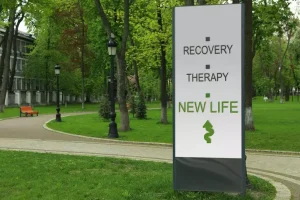
With heroin and alcohol, doctors won’t give you these substances to wean you off them. You will get prescription drugs that act in the body like heroin or alcohol in order to ease withdrawal symptoms. Your health care providers will then taper you off these medications. According to the National Institute on Drug Abuse (NIDA), detox involves getting rid of the foreign substances and managing withdrawal symptoms on an as-needed basis. In medical detox, physicians and nurses carefully supervise the patient as they are gradually weaned from the substance.

All About Drug and Alcohol Detox
During detox, using addiction medications to alleviate withdrawal symptoms or decrease cravings can be helpful for some clients. However, it’s important to remember that these medications are administered on a patient-by-patient basis under the clearance of a medical professional. The most infamous synthetic drug is the prescription opioid fentanyl. Still, many other “designer drugs” like bath salts, krokodil or kratom can also create significant withdrawal symptoms that medical detox can successfully address. Because little is known about designer drugs, which can differ widely in their ingredients, withdrawal experiences can be unpredictable. For this reason, withdrawing from synthetic drugs while in medical detox is safest to ensure unexpected withdrawal symptoms can be addressed immediately.
Your addiction does not have to define who you are.
In the big picture, when substance use interferes with daily life and becomes the top priority over personal, work, and social obligations and activities, it’s a clear sign that drug detox is likely needed. When someone is dependent on a substance, ending use can lead to a variety of uncomfortable and unpleasant effects. For certain substances, like alcohol and benzodiazepines, withdrawal can be a dangerous and even life-threatening experience.
What’s the Best Way to Detox from Substances?
Recovery involves rebuilding a life— returning to wellness and becoming a functioning member of society. Every person needs a comprehensive recovery plan that addresses educational needs, job skills, social relationships, and mental and physical health. Therapy may be critical to resolving underlying problems that made escape into substance use so appealing in the first place. Peer or mutual support is not restricted to AA or NA; it is available through other programs that similarly offer regular group meetings in which members share their experiences and recovery skills.
- People struggling with addiction usually deny they have a problem and hesitate to seek treatment.
- Your body can become used to having substances present in your system and may react strongly or cause you to feel pain when they are removed.
- While opioid withdrawal is not a fatal condition alone, its symptoms can be extremely uncomfortable.
- While oral forms of buprenorphine (Suboxone) can effectively address withdrawal symptoms, they also carry the potential for abuse.
- Fear of withdrawal can be a major obstacle for people who otherwise want to stop using.
What Happens After Detox for Drugs and Alcohol?
During detox, you can experience severe withdrawal symptoms that require medical attention, like becoming dehydrated. Without immediate access to a doctor, you may be putting yourself at risk. If you have a longer history of substance use, the detox process can potentially be very drug detox harmful if you detox too quickly or the withdrawal symptoms become too severe. The main benefit of an outpatient detox program is that you get to stay in your own home but still have professional support. Outpatient programs also tend to be less expensive than inpatient ones.

A third is establishing and maintaining a strong sense of connection to others; support helps people stay on track, and it helps retune the neural circuits of desire and goal-pursuit. Learning new coping skills for dealing with unpleasant feelings is another pillar of recovery. Addiction is a chronic disease characterized by drug seeking https://ecosoberhouse.com/ and use that is compulsive, or difficult to control, despite harmful consequences. In rapid detox, a person with a substance use disorder (SUD) is sedated with anesthesia and given medications that replace the drugs in the body. This method was originally developed for people addicted to opiate drugs like heroin and painkillers.

The third step in affordable drug rehab is providing clients with the psychological support they need to prepare for lasting recovery. Our goal is to help clients in the most effective and compassionate way possible. That’s true from the initial detox through inpatient treatment, outpatient treatment, sober living communities, and our active alumni community. The Mayo Clinic shares a list of several common symptoms of addiction. These include the need to use a substance regularly and experiencing withdrawal when they stop use. A compulsion to continue use, even when recognizing the problems it causes, is another example.

Professional treatment can start anyone battling substance misuse on the path to a happier and healthier life. Detox and rehab facilities are located throughout the U.S., and many offer specialized treatment that can cater to individual needs. Many state government websites will provide local drug and alcohol resources to those in need. Quitting drugs and alcohol without any supervision or monitoring can be dangerous.
- When someone is dependent on a substance, ending use can lead to a variety of uncomfortable and unpleasant effects.
- “Detoxification” means to remove harmful substances from the body, primarily with the help of the liver.
- Many friends and family members of people who use substances want to help but are hesitant for various reasons or do not know where to start.
- Make sure to talk with a healthcare provider before going through a substance detox (stopping use of a substance).
- Patients in medical detox usually transition immediately to residential or partial hospitalization treatment.
It’s hard to leave addiction behind without constructing a desirable future. • Developing a detailed relapse prevention plan and keeping it in a convenient place for quick access when cravings hit, which helps guard against relapse in the future. A good relapse prevention plan specifies a person’s triggers for drug use, lists several coping skills to deploy, and lists people to call on for immediate support, along with their contact information. The best way to handle a relapse is to take quick action to seek help, whether it’s intensifying support from family, friends, and peers or entering a treatment program. One advantage of mutual support groups is that there is likely someone to call on in such an emergency who has experienced a relapse and knows exactly how to help.





